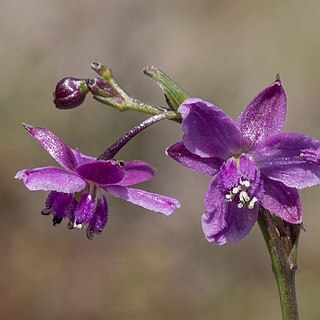A perennial plant which grows 30 cm high. It can grow as an annual. It spreads 10-20 cm across. It forms tufts. Plants produce 4-5 tubers. These can be 3 cm long. The leaves are small and 5 mm wide. They are usually lax and on the ground. The flowers are 1 cm across. They usually occur singly but can be in groups of 2 or 3. The flowers droop. The flower stem is usually less than 30 cm tall and often 10 cm tall. It is deep purple. The fruit is a black capsule with several seeds.

